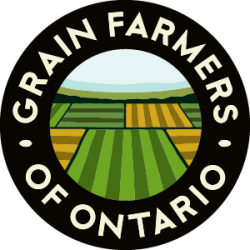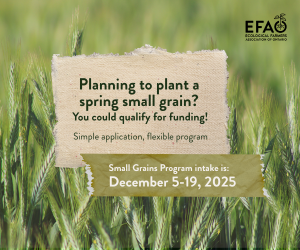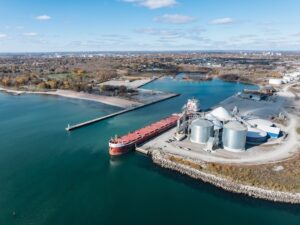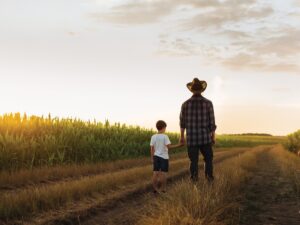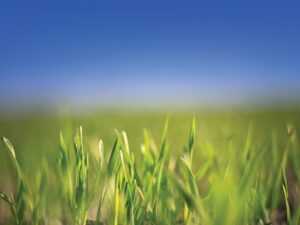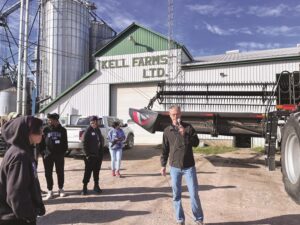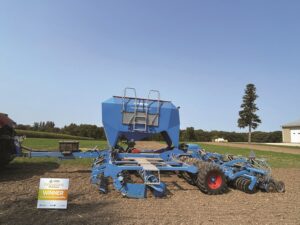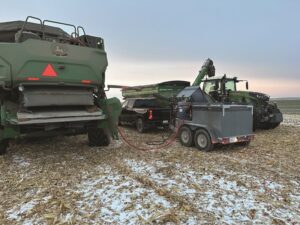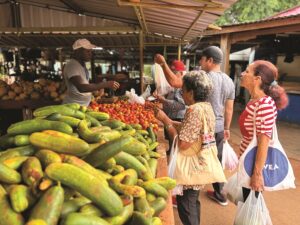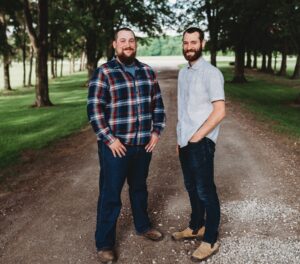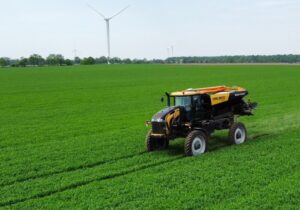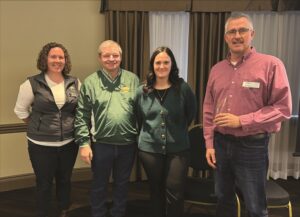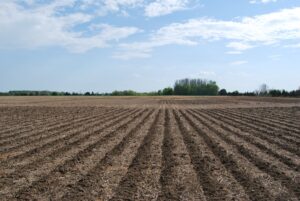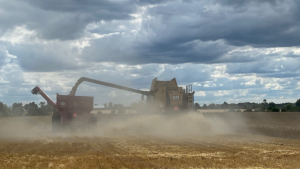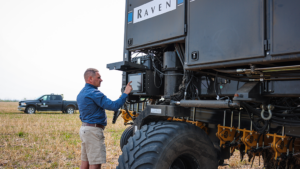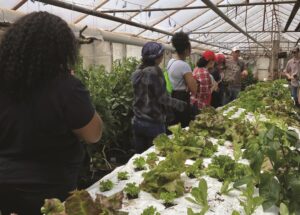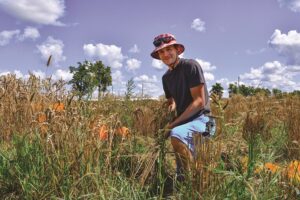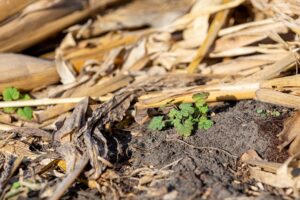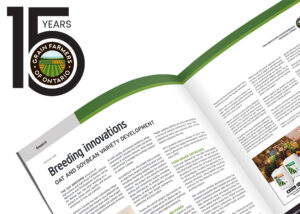FarmingSmarter withLivingLab
ONTARIO'S COLLABORATIVE APPROACH UNITING FARMERS AND SCIENTISTS
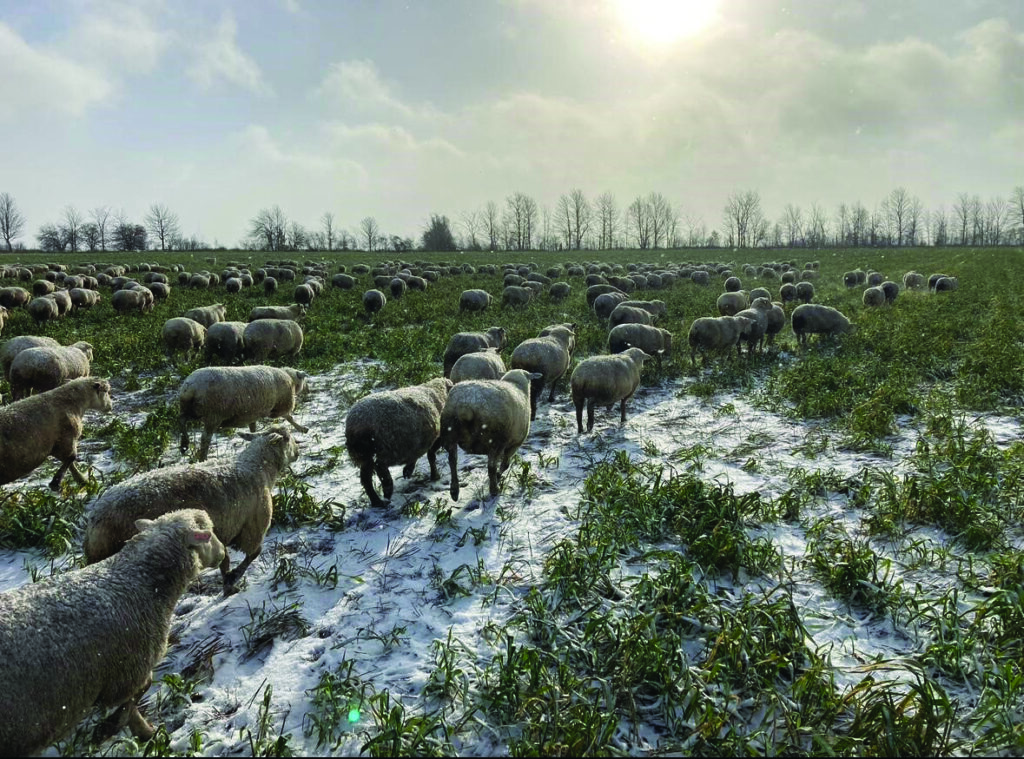
The Living Lab-Ontario Program, part of the Agricultural Climate Solutions (ACS) Program (2021-2031), unites various stakeholders in the agriculture sector to collaboratively design and trial on-farm practices and technologies aimed at lowering greenhouse gas (GHG) emissions and enhancing carbon sequestration within practical, real-world settings.
The $185 million ACS Living Lab program, launched in 2021, is a Canada-wide project with 13 labs. Agriculture and Agri-Food Canada (AAFC) aims to strengthen a nationwide network of agricultural living labs over a 10-year period.
Ontario Soil and Crop Improvement Association (OSCIA) serves as the delivery agent for this program and has partnered with more than 15 agricultural organizations across the province to deliver a five-year project for the development of new best management practices (BMPs) and technologies through partnerships between farmers and researchers. Living Lab-Ontario builds on the success of the previous Living Lab initiative (2018-2023) but with a focus on evaluating and adopting BMPs that address climate challenges in both livestock and crop production systems on farms across Ontario.
COLLABORATING FOR SUCCESS
The success of the Living Lab-Ontario program and its predecessor can be attributed in large part to the collaborative efforts of its many partners. Funding for the project has been provided by AAFC under the Agricultural Climate Solutions – Living Lab program, and core partners including Beef Farmers of Ontario, Dairy Farmers of Ontario, Grain Farmers of Ontario, Ontario Federation of Agriculture, Ontario Pork, and Ontario Sheep Farmers.
In addition to the core partners, more than 59 farmers and 16 private- and public-sector researchers are involved in this program, along with environmental and agricultural organizations and other experts. These collaborators include the Canadian Wildlife Federation, the County of Wellington, Ecological Farmers Association of Ontario, the Green Belt Foundation, Livestock Research Innovation Corporation, Ontario Ministry of Agriculture, Food and Agribusiness (OMAFA), Soils at Guelph, and the University of British Columbia.
INNOVATION CYCLE
Chris McPhee, innovation management specialist with Living Labs Division (AAFC), says that “Living Lab is not a research project, it is innovation supported by research.”
The Living Lab approach has producers at the heart of its innovation cycle. Through a co-development process, the collaborators, researchers, and farmers work together to identify needs and outcomes and then generate and share ideas (“co-development”); conduct experiments, acquire new data and explore new knowledge (“test”); and then examine the results including all types of data and user experience (“evaluate”). Through this process, the innovations and applications developed are reviewed, adapted, and changed to fit the needs of the producer by adapting on-farm practices based on practical and economic feasibility recommendations.
ADDRESSING KEY CHALLENGES
While the program is geared towards finding practical, science-backed BMPs for both crop and livestock systems, these BMPs always keep climate change challenges in mind, namely GHG emission reduction and carbon sequestration. The BMPs being developed and tested in this program include:
- Cover crop grazing – developing BMPs by assessing the agronomic and environmental benefits of livestock grazing.
- Nitrogen efficiency and use – evaluating and developing 4R strategies to enhance nitrogen efficiency and mitigate environmental impacts.
- Increasing soil organic carbon (SOC) – changes in SOC as a result of implementing BMPs.
- Manure storage management – reducing methane emissions from liquid manure storage.
- Field edge practices – evaluating beneficial effects of restoring marginal lands to native vegetation.
- Decision support tools – a farm-level financial and economic evaluation of BMP adoption.
REGIONAL DIVERSITY
To ensure that the program’s results will be applicable to a broad range of farmers across Ontario, the program cooperators targeted various farm sites across Ontario’s agricultural communities. These sites represent a variety of climate and soil conditions and allow for the implementation of the identified BMPs.
TRANSFORMING AGRICULTURE ONE FARM AT A TIME
Selected farmer cooperators have begun to engage in various practices, which will continue to be implemented in 2025. In addition, OSCIA recently announced the inclusion of four more Living Lab–Ontario cooperators, whose focus will be on comparing cover crop planting methods following corn or soybeans, using, among other options, drones to seed cover crops. The project is reviewed annually, and adjustments are made to the site-specific projects and targets as needed, along with the addition of more cooperators and projects.
CLIMATE GOALS
The Living Lab–Ontario program is a key component of Canada’s broader climate strategy, which includes the 2030 Emission Reduction Plan. The program focuses on three main priorities:
- Sequester carbon: Projects incorporating
- no-till, cover cropping, and establishing natural field edges such as shelterbelts and riparian zones contribute to long-term carbon storage.
- Reduce GHG emissions: Many sustainable farming practices lower GHG emissions.
- Provide other environmental co-benefits:
These practices further include soil and water quality improvements, biodiversity safeguards, and more resilient agroecosystems.
These priorities align with Canada’s commitment to achieving net zero emissions by 2050, a goal that gained momentum with the Paris Agreement in 2015. As an early adopter of the net zero target, Canada has been actively pursuing initiatives across various sectors to work toward this objective.
THE FUTURE OF LIVING LAB-ONTARIO
The five-year program that OSCIA began in 2021 has already made great strides in achieving its goals. As for the program in review, Angela Straathof, director of research and knowledge transfer with OSCIA, notes that “2024 was a foundational year for Living Lab milestone achievement, including the start of our trial implementation and sampling, and the enhancement of key relationships among the farmer cooperators, researchers and partners. We’re looking ahead to exciting possibilities in 2025!”. Keep an eye on this program as the practical research results will shape how we farm into the future.
LEARN MORE
To learn more about the Living Labs program, visit Living Lab-Ontario: www.www.ontariosoilcrop.org/livinglab/ •

